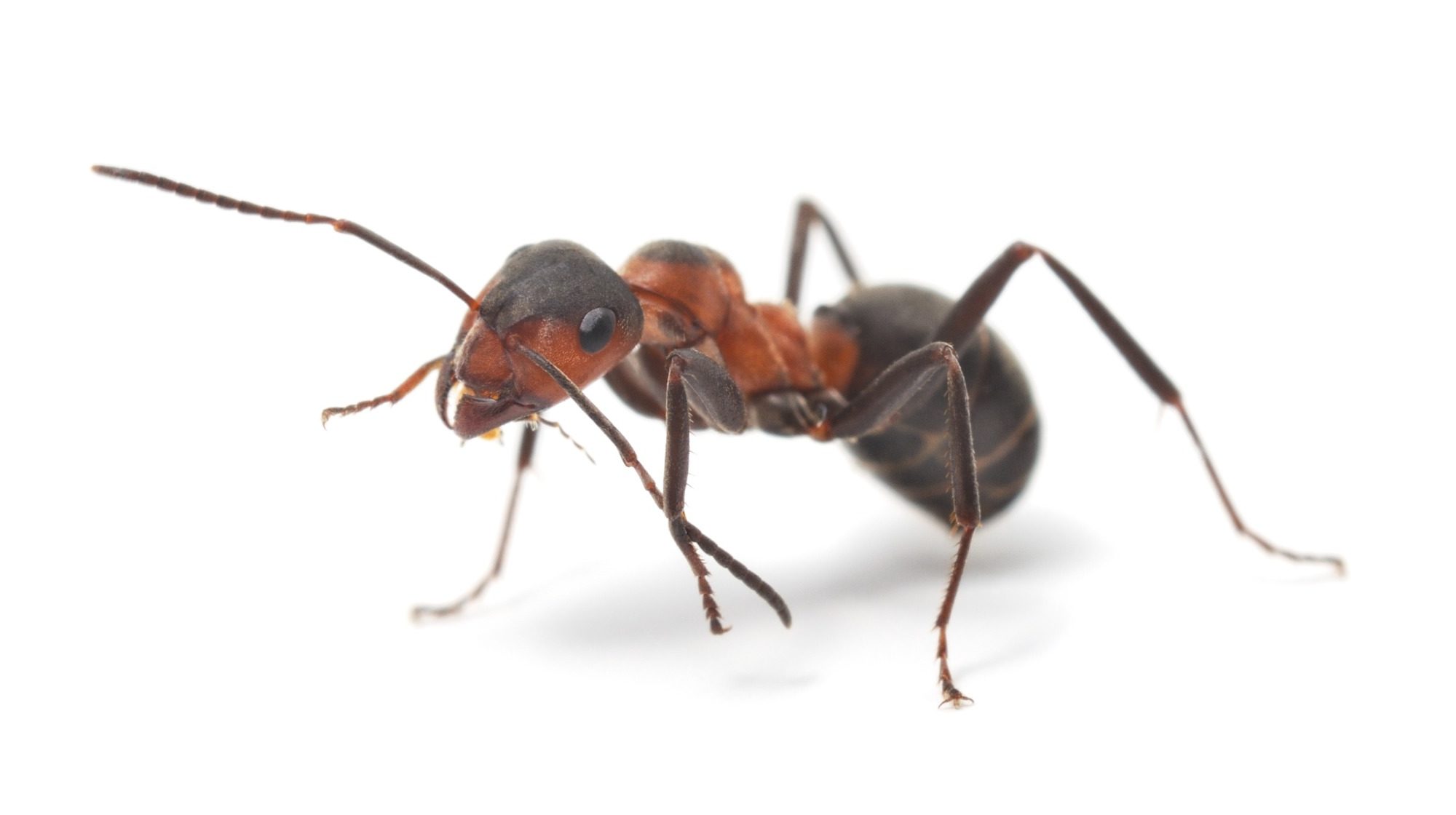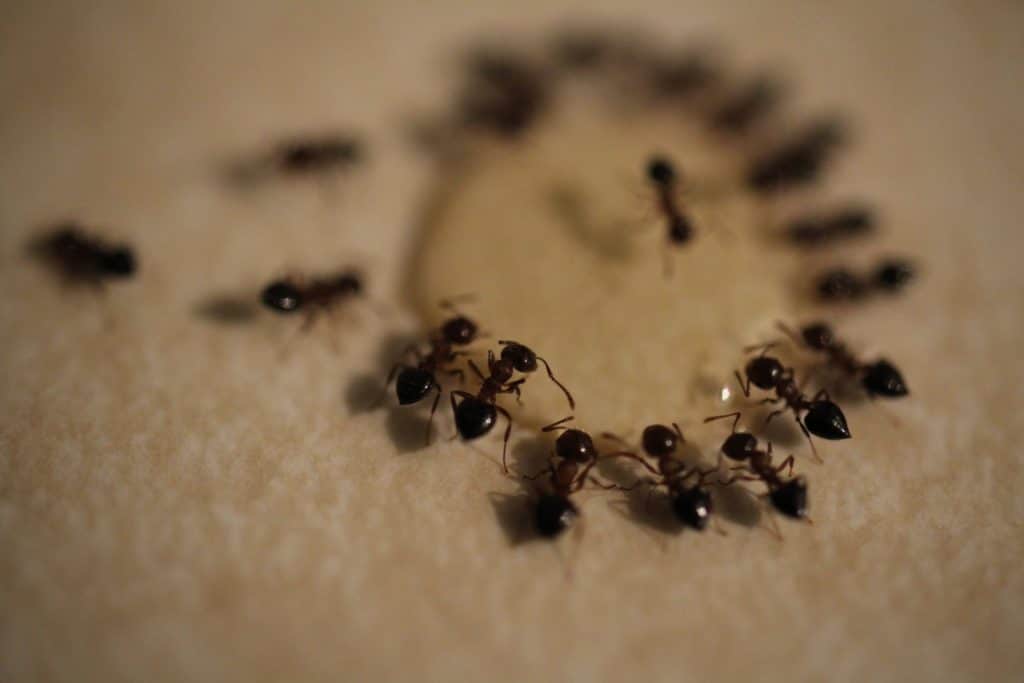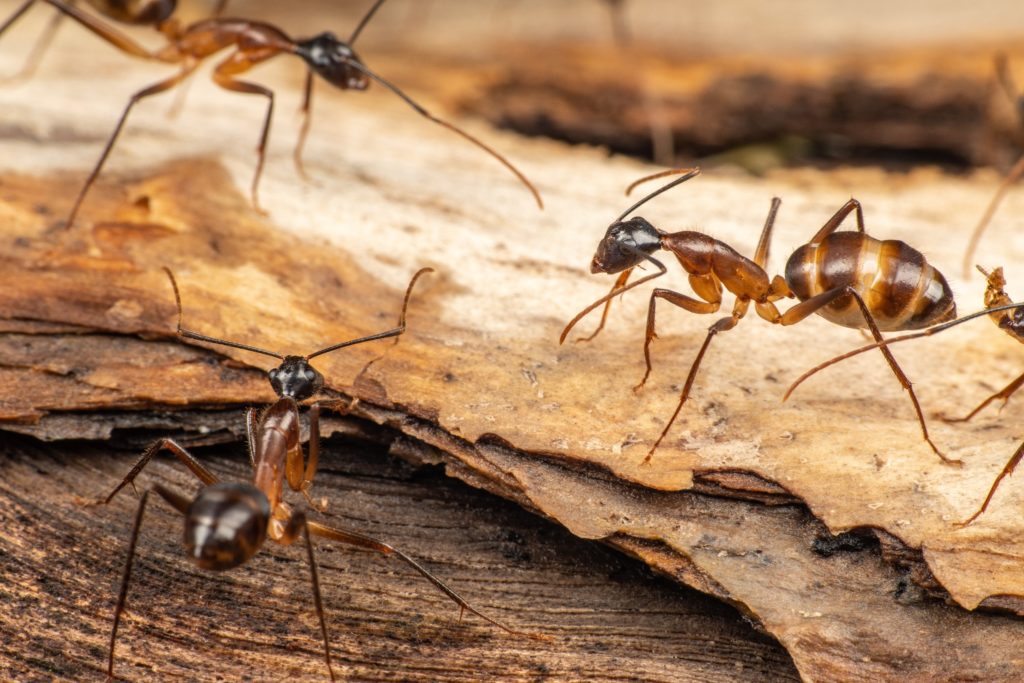
Spring has sprung in the Midwest, unleashing a plethora of pests, including – ants! Environmental Pest Management knows everything about ants (and whatever else is bugging you). And are here to help discuss the types of ants in Minnesota.
They’ve been in the business since 1986, and service the Twin Cities metro area, its surrounding suburbs, and parts of western Wisconsin, too.
Whether your ant infestation is at home or work, Environmental Pest Management is here to handle whatever’s bugging you. Contact them today for a FREE quote.
Common Types Of Ants in Minnesota

In Spring, ants are eager to find a food source and a nice place to live. Their presence can be a big problem until you call a pest control professional. Environmental Pest Control has helpful ways that you can prepare your home for warmer weather.
Although there are 12,500 different ant species, only about ten call Minnesota home. If you see red ants, don’t freak out! It’s doubtful that they’re Imported Fire Ants.
Here are the most common types of ants in Minnesota:
Carpenter Ants (Camponotus pennsylvanicus)
These ants are some of the biggest you’ll encounter! Reaching 1/4-inch to 1/2-inch in length, they are usually black or brownish. They may also have long yellow or gray hairs.
Cornfield Ants (Lasius alienus)
Often mistaken for Carpenter Ants, Cornfield Ants are pale to dark brown but can also be red, black, or a mixture of colors. They range in size from 1/10-inch long to 1/4-inch long. Unlike Carpenter Ants, this odorous house ant emits a nasty odor when crushed.
Field Ants (Formica spp.)
These ants are medium-to-large in size, ranging from 1⁄5 to ⅜ inches in length. Their color can vary as some are black, while others are a combination of black and red. Although these ants don’t nest in your home, they build large ant mounds in your yard, which are unsightly and problematic.
Larger Yellow Ants (Acanthomyops interjectus)
If you smell lemons when you kill or disturb these ants, you’ve got Larger Yellow Ants in your home. These ants range in color from yellow to brownish-red, and workers grow to around 3/16-inch long.
Pavement Ants (Tetramorium caespitum)
Pavement ants are a bit like watching “Game of Thrones.” These warring ants fight each other over territory. The pavement ant only grows to 1/8-inch in length and has a reddish-brown or black body. Furrows line the heads of pavement ants from top to bottom.
Pharaoh Ants (Monomorium pharaonis)
These tiny-but-mighty ants are about 1/16-inch long with pale yellow to red bodies with a darker color in their middle sections. They are often mistaken for other ant species.
Thief Ants (Solenopsis molesta)
These little buggers measure about 1/10-1/16 inches. They may have a range in color from yellowish to brown. One unique feature is that their antennae have ten segments with a two-segmented club. In comparison, Pharaoh Ants have 12 segmented antennae ending with a three-segmented club.
Spring Cleaning to Help Prevent Ants

As we’ve mentioned, Spring is the time ants become active again. Now is an excellent time to go through the following rooms to check for signs of ants and other pests:
- Bathroom
- Basement
- Kitchen
- Outside
It is also wise to check the seals around your doors and windows. Ants are persistent, creative creatures and can easily find their way into seemingly closed-off homes.
Sometimes a deep cleaning and good ol’ ant traps are all that’s needed to get rid of ants. You think you clean up well enough, but they come back before you know it, and further, any control is needed. That’s the time to call Environmental Pest Management for a free quote.
What Ants Prefer

- Carpenter Ants: These ants love wood and wooden structures, especially rotting, wet or damaged wood. They’ll tunnel through the rotting wood to build their nests under your bathroom floor, roof, or behind walls. Carpenter Ants love grease, meats, and anything sweet.
- Cornfield Ants: OUCH! Did you know the Cornfield Ant bites? Luckily, the bite isn’t serious and merely causes a slight itch or stinging. True to their name, Cornfield Ants prefer to nest outdoors. These ant nests leave unsightly craters in lawns or planters as the colony increases. If you’ve found Cornfield Ants in your home, it means you have moisture in your home’s wood.
- Field Ants: Like Cornfield Ants, these sizeable ants create mounds in open areas like lawns and meadows. Although they don’t nest in homes, they may find a way inside when swarming or searching for food. Common points of entry are loose weather stripping and cracked windows. Ant nests built close to the foundation may also enable ants to enter your home quickly.
- Larger Yellow Ants: These nocturnal ants get busy at night. Like Pavement Ants, these pests often nest under concrete or home foundations. Although they don’t damage masonry, they can be very tricky to control once established.
- Pavement Ants: These ants love greasy foods and sweets like most other pest ants. They often enter homes through the nests that they build under concrete slabs and homes with concrete foundations. They also like to nest under heated slab foundations throughout the winter.
- Pharaoh Ants: Pharaoh ants feast on high-fat and sugary foods. They also enjoy a good snack of soap, toothpaste, and other hygiene products. If you notice them coming back again and again, it’s because they leave a pheromone trail to show other ants where your goodies are. The ants will infest your food stores in large numbers if they find food in the same spot twice.
- Thief Ants: Thief Ants get into your home through cracks in your woodwork, holes in walls, and open doors. These ants feed on greasy foods high in protein or sweets. During your Spring cleaning, make sure to check your children’s room to make sure there’s no candy hiding under the bed or in the closet.
Help Is On The Way

If infestations are hard to manage yourself, it’s best to call in the past professionals at Environmental Pest Management. They’ll immediately identify the problem and fix it. Contact them today for your FREE quote.
